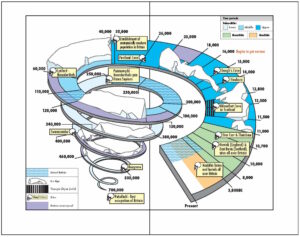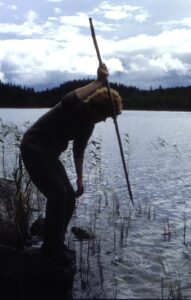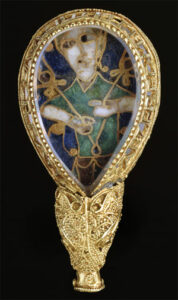
I have a confession to make.
I hate dating…
To start with there are so many different types of date.
Take radiocarbon for example. I’m assuming you know how radiocarbon works (if you don’t there is a good explanation here). A raw radiocarbon date is a measurement of how much radiocarbon is left in an organic object, from which we calculate how long ago the object died. When you cite radiocarbon dates you can cite them as radiocarbon years: uncalibrated BP. But most people prefer to adjust them so that they equate to calendar years: calibrated BP; this is done by calibrating the radiocarbon date (which you will see referred to as a date, a determination, an assessment, an age or an assay), against organic material of known age (read about it here). A calibrated date is rarely a single year; it is more usually expressed as a range of years together with a probability in order to indicate the mathematical likelihood that the date falls within that range.
You have to know here that BP stands for Before Present. Except that it doesn’t – for uncalibrated dates it really stands for Before 1950, because that year has been accepted as a norm against which the decay of radioactive isotopes is measured. At the moment the little matter of 66 years seems but a tiny blip in the assessment of time, though we will have to do something about it as time progresses and measurements become more accurate.
Then of course you can adjust dates to the commonly accepted BC (Before Christ), except that in many countries it is now BCE (Before the Common Era). BC dates can be uncalibrated, or calibrated (usually: bc or cal BC). Uncalibrated bc dates are rarely used nowadays and usually achieved by subtracting 1950 from the uncalibrated BP date.
There are also calendar years (sometimes known as human years). And quite a lot of publications generalise as ‘years ago’. You will sometimes see dates quoted as 8 ka BP, which in general means 8000 BP and is usually calibrated, though the publication may specify that it is not.
Do you begin to see my problem? And I haven’t even begun to talk about the Bayesian analysis of dates (see here).
Add to the murk the fact that while archaeologists prefer quoting dates as cal BC, geoscientists will usually use cal BP. So, an interdisciplinary project can run into problems.
And not just interdisciplinary, multi-authored, projects; I’ve been reading a book that cites date ranges as uncal BP, cal BP, unspecified BP, years ago, 14C years ago, and cal BC; all in few pages of text. There are also a few uncalibrated original dates to play with.
It is a nightmare to make sense of it all. I’m not sure what the answer is, but I’m sure there must be a better way. For now, all we can do is plead for people to use one standard throughout their work, explain clearly what it is at the start, and stick to it!
I’m adding to this a link to the Archaeology Blogging Carnival that runs this month, perhaps there are other potential bloggers out there who like to think about archaeology!







You must be logged in to post a comment.